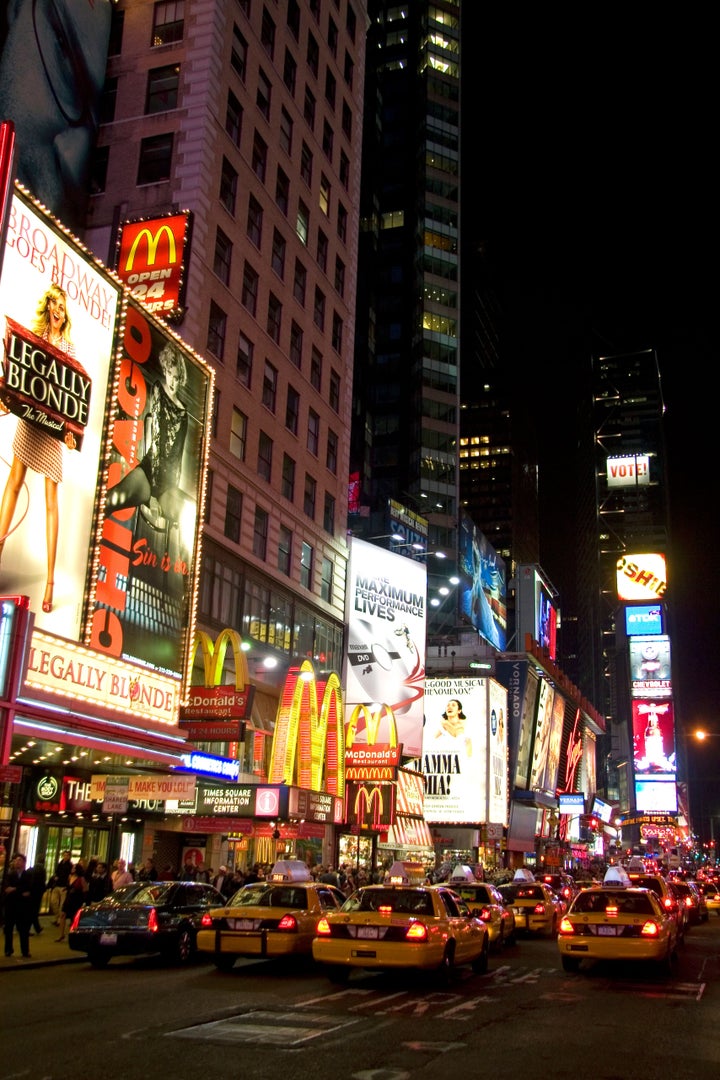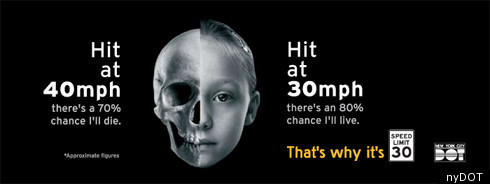
The Tri-State Campaign for Transportation, that pesky nonprofit that won't let us forget how dicey transit is in the metropolitan area, has released a report revealing the region's most dangerous roads. Over three years, from 2008-2010, 463 pedestrians were killed in accidents in New York City. These are the 10 most dangerous walking roads in the city:
1. Broadway (Manhattan), with 13 pedestrians killed from 2008-2010.
2. Broadway (The Bronx), 7 killed.
3. Kings Highway (Brooklyn), with 7 killed
4. Henry Hudson Parkway (Manhattan), 7 Killed
5. Atlantic Avenue (Brooklyn) 7 killed
6. Jamaica Avenue (Queens) 6 killed
7. Grand Concourse (Bronx), 6 killed
8. Brighton Beach Avenue (Brooklyn) 6
9. Amsterdam Avenue (Manhattan) 6
10. Union Turnpike (Queens) 6
And here are the 5 boroughs, by the number of pedestrian fatalities from 2008-2010:
Bronx: 75
Brooklyn: 139
Manhattan: 101
Queens: 125
Staten Island: 23
In the tri-state area, 60 percent of the 1,267 pedestrian deaths occurred on arterials roads "with at least two lanes in each direction, accommodating vehicle speeds of 40 mph or more, and often lacking pedestrian infrastructure such as sidewalks, crossing signals, well-defined crosswalks or medians designed to protect pedestrians from fastmoving traffic." In case you forgot this DOT ad from last year, 40 mph is usually fatal:

Maybe the NYPD should divert their attention from bicyclists and start targeting jaywalkers? Just turn the city into one big High-Line?
The TSTC suggests:
1)Make pedestrian safety a policy and investment priority;
2) Protect the most vulnerable pedestrians through increased investment on Safe Routes to School,
Safe Routes to Transit and Safe Routes for Seniors programs;
3) Track and monitor complete streets policies to ensure that new or retrofitted roads safely accommodate bicyclists, pedestrians, transit riders, and motorists of all ages and abilities; and,
4) Preserve and expand federal programs that provide significant funding for bicycle and pedestrian
projects